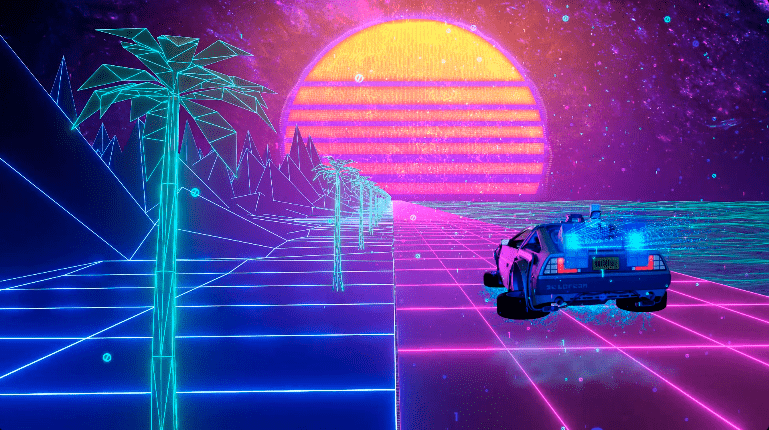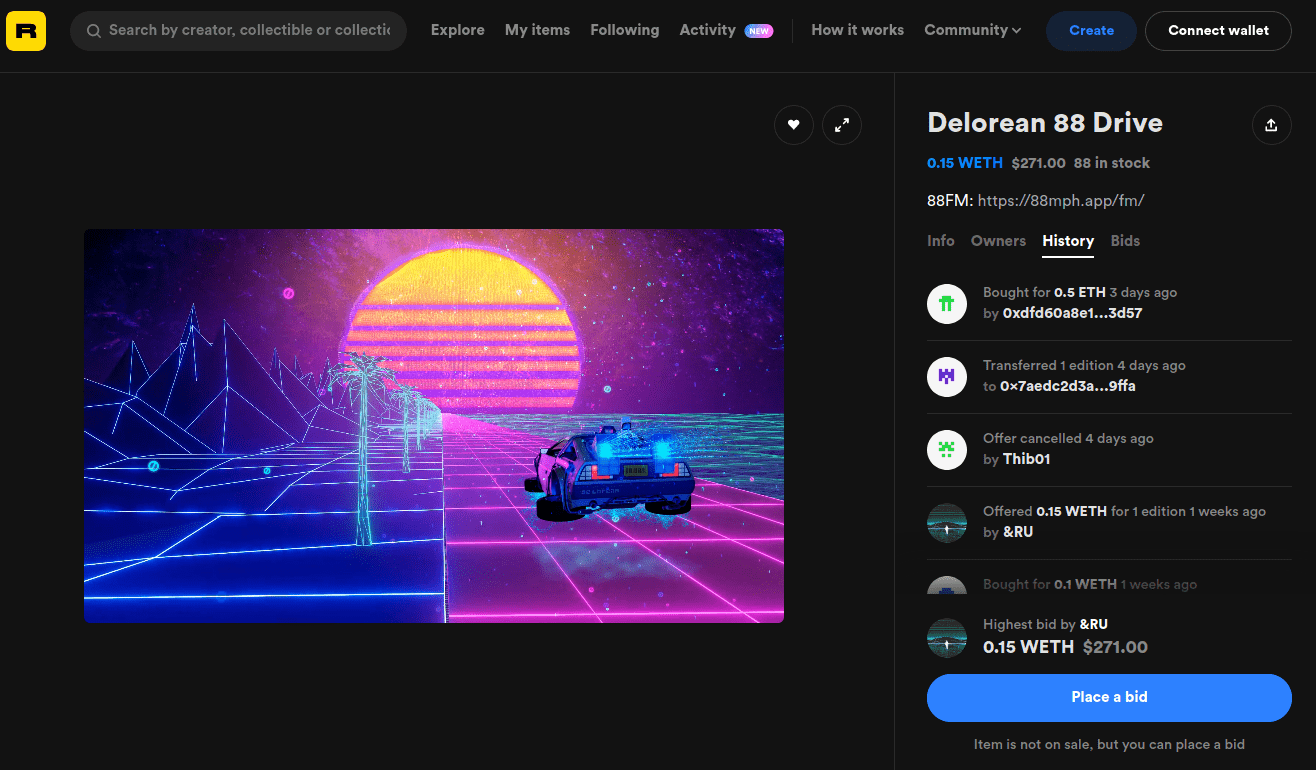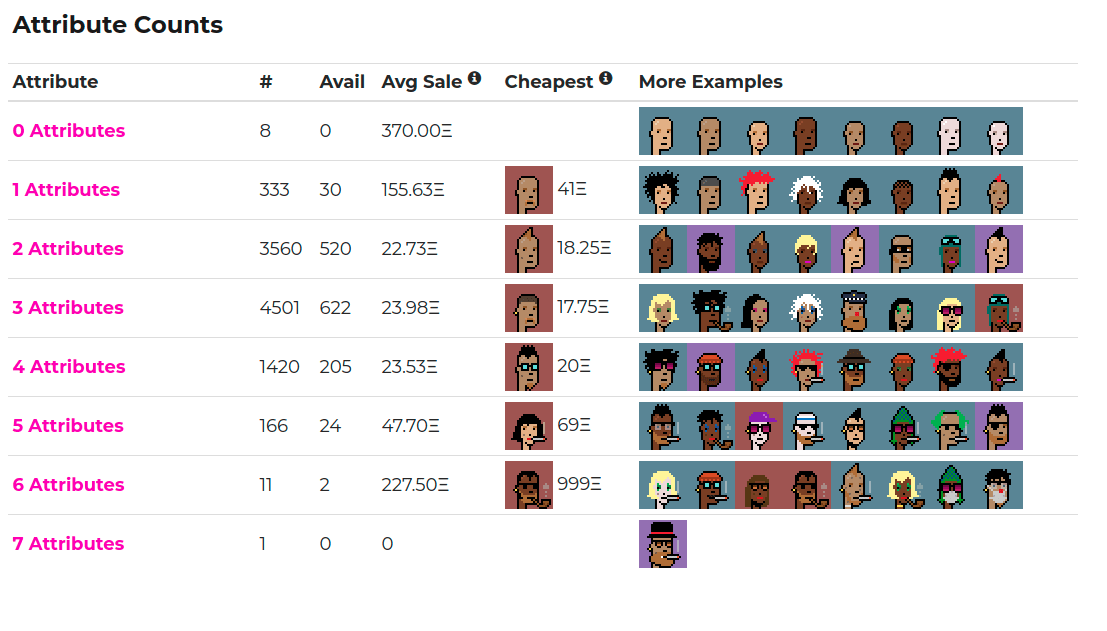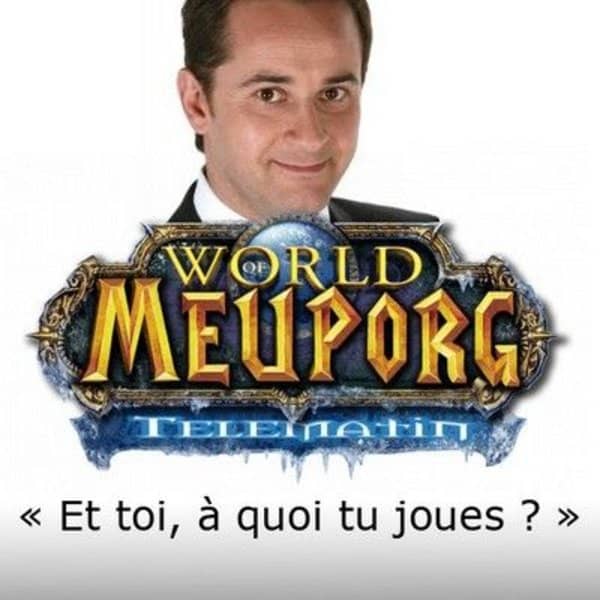Non-fungible tokens are attracting a lot of attention lately. On the one hand, the general public is scratching its head about the ever-rising records observed on flagship sales, now covered in the mainstream press[1]. On the other hand, artists still not initiated to blockchains realize the potential offered by disintermediation as well as the possibilities offered by the programmable nature of this new art form. In between, a diverse audience ranging from the casual collector to the seasoned speculator.
One thing is certain: NFTs leave no one indifferent. Indeed, by combining the logic of provable digital scarcity with art, NFTs allow to explore new forms of expression. Moreover, the programmable dimension of NFTs opens the way to a barely begun exploration of new forms of interactivity.
Today I would like to leave theory aside as much as possible and focus on the practical uses observed with these NFTs. We will therefore analyze two fundamental characteristics of NFTs - their community dimension and their ability to become social markers. Once these two dimensions are established, we can consider different use cases.
 ◎ The DeLorean 88MPH, an NFT at the center of a small experiment that you will read about below
◎ The DeLorean 88MPH, an NFT at the center of a small experiment that you will read about below
I’m not going to explain the basic features offered by NFTs. I published an article in 2018 that covered the basics and which is still relevant to date. Non-fungible Tokens Explained by Blastoise and Charizard.
Note
Non-fungible tokens are like a new type of lego used to represent families of assets that share common attributes. They are extremely relevant for community-based uses or in video games but NFTs offer much more.
For example in DeFi, an inter-asset exchange on Curve involves a “receipt” NFT and more recently Uniswap is considering NFT tokens to represent liquidity provider positions (and their many parameters) for V3.
All these different uses of “NFT technology” are relevant. However, we are going to focus on the artistic and community uses of NFTs.
The community dimension of NFTs
To understand collectibles and NFTs, I think it is essential to understand their community and social dimension. From a community point of view, the simple possession of an NFT can be enough to show a belonging to a given group, like the CryptoPunks for example.
I am convinced that at a primordial level NFTs are a direct response to a very human tendency: we are all collectors, in one way or another. Items usually collected require trust in the issuer to be certain of rarity (e.g. Pokemon card). NFTs allow assets with provable numerical rarity, which completely changes the parameters of the equation.
Henceforth, each work of art can become famous and its entire history is accessible to all and tamper-proof. Where in classical art, only the history of the most famous pieces is told (by secondary sources), with NFTs each piece get the same treatment: its creation as well as each purchase or transfer are recorded on a public blockchain. They can be consulted (and verified) by everyone.
The weight of ascertainable history
The story behind a work of art has always been an integral part of it. But with its incorporation directly into the object, without intermediation and therefore without the need to have a third person to tell it, we go to a much more interesting level. My views are still young on the subject, but I am convinced that with this new tamper-proof interface to access the history of the object, comes a revaluation of it.
I’m testing this hypothesis with a artwork of which I write part of the history, the famous DeLorean 88MPH. By acquiring a quarter of the circulating total, that is progressively distributed to DeFi France / TokenBrice contributors, I simultaneously articulate these two overarching theses about NFTs: this iconic car becomes both a community tool and a social marker. It shows the belonging to a group, while allowing to prove one’s involvement in it.
It is too early to draw conclusions from this experiment but nevertheless the first results are encouraging: out of the 22 DeLos, 8 have been distributed. The best buyback offer is currently at 0.15 ETH, which is about 3x the initial purchase price (88 DAI) but none of the 8 people who received this NFT gave in. The Delo is still being traded though: one of them was just sold for 0.5 ETH.
 ◎ The DeLorean 88MPH on Rarible
◎ The DeLorean 88MPH on Rarible
For them, some of them at least, this NFT also has a very personal story. Indeed, it was the first digital object of its kind owned by several of the winners and the context of its acquisition quickly makes it a symbol: it was earned trough their hard work
Note
I do not give resale instructions for NFT donations. I encourage the winners to keep the NFT if they like it, but also point out sale opportunities that exist at the time of donation if they wish.
NFTs as a social marker : CrytoPunks analyses !
Due to the NFTs’s social aspect, together with their ability to incorporate and verify their own storyline, another feature emerged : they can be used as a social distinction. Using CryptoPunks to make this point is quite suitable in my opinion.
 ◎ An overview of some Punks
◎ An overview of some Punks
They were among the first NFTs collection projects. The originality lies in their unique charateristics : No two Punks are alike as they have been generated algorithmically with some traits rarer than others. In this way some Punks have become almost legendary as well as their prices ![2]
As time goes by, CryptoPunks have established themselves as the symbol of something way greater than just NFTs. It is now the most traded NFTs collection on the market with a floor price that lies around 17 ETH :
 ◎ The main metrics around the Punks (screenshot on March 29, 2021)
◎ The main metrics around the Punks (screenshot on March 29, 2021)
How to recognize the scarcity ?
Knowing and being able to recognize the Punks attributes is a high-valuated skill to be part of the community. There is a total of 10,000 Punks. Indeed, each Punks have their own profile page showing their type (human, Zombie, Ape or Alien) and their different traits, from absolutely none to a maximum of 7 for the most unique of them : only one Punk gathers as much !
This does not mean that more is best : the demand for Punks without any attribute is really strong due to the very low supply : only 8 in total !
Thus, there are only 333 Punks (/10 000) with 1 trait, which also makes them quite rare and wanted. Similarly, Punks with 5 (166 units) or 6 attributes (11 units) are also uncommon.
The biggest part of the collection is made up with “common” Punks, with 2 ( 3560 units ), 3 ( 4501 units ) or 4 attributes ( 1420 units ) : these Punks represent almost 95% of the total supply.[3]
 ◎ The number of traits per Punk and their rarity
◎ The number of traits per Punk and their rarity
Punks are now at the center of a whole ecosystem : from technical integrations (with the ERC-721 wrapper for example or into NFTs indexes[4]) to the artistic field such as the PicassoPunk :
Just as exhibiting well-chosen modern art in a living room gives a special aura, displaying your Punk becomes a symbol that goes far beyond the token itself. It may now be in good taste to use a Punk from your collection as a profile picture on Twitter. Of course, the more unique and rare it is, the more intrigued the savvy audience will be.
The analysis of CryptoPunks allows us to understand many fundamental things to assimilate the use of NFTs. Nevertheless, the use cases for NFTs are much more diversified. So I suggest you explore a few more!
The main use cases of NFTs
Creation and sales services
The easiest way to acquire your first NFTs is still to buy them. This is far from being the only method, as we will see below, but before that, let’s have a quick look at the main platforms and their modalities.
The most commonly used site is probably OpenSea, which allows direct sales or auctions. Rarible is another easily accessible and potentially more optimized option for creators to emerge. It is sometimes described as the “Etsy” of NFTs.
Other services exist, with more curatorial approaches, such as Foundation which is selective about its artists and where each work is a unique copy.
Each service comes with different modalities and sometimes different NFT types as well: ERC-721 or 1155 explained here. The rules that govern their auctions and revenue sharing also affect the overall direction of the platform. To start collecting with taste, it’s good to know at least what you’re buying!
NFTs + Video games, in all forms
One of the most obvious use cases for NFTs is of course video games. Almost everyone understands this immediately once the issue of provable digital scarcity is well understood.
A new level of persistence
Without NFT, a player can find himself fighting for days in an online game to get an item… that is not actualy his. It is sometimes so repetitive that the term “farming” is also used by players to describe their practice (a slightly different meaning from the DeFians’ “farming”).

The game services may stop for example (if it is an online game) and often the player cannot exchange his item freely. Incorporating NFTs in video games allows the existence of a persistence that is not dependent of the game editor.
Persistence, as every gamer and every DeFian understands, is in a way the soul of an online game. However, this is only the most fundamental level of the potential contribution of NFTs to video games. They also allow a whole set of additional logic thanks to their programmable dimension, among others:
- Stories that are truly co-written by players and can be remembered.
- Items that can exist in multiple games, even potentially with a story that feeds from the different universes where the item is involved.
- Famous players who leave a real mark in the game, far beyond a boss or place named after them.
Some NFT standards, such as 1155, go further and allow the existence of attributes that evolve on different tokens. They allow to consider a new form of persistence where the player’s actions would potentially translate into concrete actions (on-chain) taken for the organization (the DAO) master of the game(s) involved.
The contribution of a marketplace in digital worlds
Proven digital scarcity has been a key issue since the beginning of the first persistent online worlds. All games that have a large audience also have a developed and successful “black market”.
In each digital world its bazaar paid in real money: for example in World of Warcraft, a simple google search allows you to buy gold or various other services to accelerate the progression of your character thanks to a secondary market of service providers.
Having an object, potentially created by the game publisher but not dependent on it for its concrete existence, is absolutely new. This does not mean, of course, that every object in every game will have a second and third existence, but it is now a possibility.
Imagine if you could deploy your own Charizard - the one that’s been sleeping in your GameBoy for over 15 years - in a Pokemon arena in virtual reality. It would become a digital object, represented by an NFT and incorporating all your history with it, making it also, in effect, unique. Each battle or tournament could leave traces on the NFT-object, such as a temporary weakening or learning new abilities.
Voici une vision primitive du “endgame” que j’entrevois, à la croisée des jeux vidéo, des NFTs et de la réalité virtuelle. Il y a déjà tout un concept pour décrire cette nouvelle réalité qui prend forme sous nos yeux : le Metaverse. Il s’agit de mondes virtuels persistants composés entre autres de NFTs. N’hésitez pas à suivre la newsletter francophone référence en la matière pour en apprendre davantage : MetaVersalFR.
Here is a primitive vision of the “endgame” that I foresee, at the crossroads of video games, NFTs and virtual reality. There is already a concept to describe this new reality that is taking shape : the Metaverse. These are persistent virtual worlds composed among others of NFTs.
Farming NFTs ? NFT + DeFi
If NFTs are coming to games, the reverse is also true: games and NFTs are also coming into DeFi.
It all started very simply, with an approach that every DeFian knows well: This is the concept of Meme, where the user stakes MEME tokens to obtain points (pineapples) used to obtain the desired NFTs.
There are no other fees than gas costs of the various operations and potentially a minting fee paid in ETH for some coins. Even so, many coins are highly desirable and wanted on the secondary market.[5]
Meme is now several months old and has become a service that has managed to surpass its own token. Collaborations with different artists are frequent to propose new collections, but also directly with projects.
For example, Meme was used to support a game with BadgerDAO. By depositing bBADGER or UNIv2 BADGER/wBTC tokens, users could farm 6 different NFTs related to the project universe. The first player to assemble all 6 different NFTs was able to open a smart contract and receive a nice amount of BADGER tokens as a bonus. In addition, the possession of these NFTs served as a bonus factor on the distribution (airdrop) of the DIGG token. The second part of the Badger NFT game has just begun.
Other services use Meme with a similar approach : the YOP platform proposes to farm “tickets” of different rarities. They will potentially allow access before the general public, once the service is available. Here we find the community dimension of NFTs.
88MPH is doing something similar by offering NFTs to the biggest users of its new products a few weeks after their launch. Holding such an NFT would also be an excellent criterion to target the most relevant users to test the new versions and participate more actively in the development of the project (purely an illustration on my part, there has been no official announcement in this sense to my knowledge).
To infinity, and beyond !
In this article we have mainly developed few analyses that demonstrate possibilities offered by NFTs. Finally, I will give you a brief overview of what’s left to discover.
In France, I had the opportunity to talk with an artist who explores a universe that could be described as “role playing with NFTs”. Arke, for example, offers an innovative collection that is animated with Legends of Cryptonia.
Aside for the usual characters, some have been poisoned, others have specific status and the story of Cryptonia is still being written every day. The first “creature” is now available for sale and unlocks access to multiple poisoned characters.
The possibilities offered by NFTs, thanks to their programmable structure, are actually infinite. Before concluding, let’s consider few other use cases not yet covered in this article:
NFTs are also used as commemorative badges to remember and show presence at a particular event. The POAP project allows for example to create “proofs of attendance” for an event with ease.
Community membership could also be directly represented by a scalable NFT. This would allow, among other things, to record the common history by saving each of the on-chain actions of all its members. This use case is obviously unrealistic today with the gas costs of the mainnet, but possible on L2 or sidechain.
Let’s not forget also that I have focused this article on the community and artistic uses of NFTs. It doesn’t mention what NFTs can allow in terms of intellectual property or even physical goods.
Basically, NFTs have the potential to become a new type of “universal dictionary “ allowing to represent and define any object but especially family or category of objects in a reliable and on-chain way. This allows the “tokenization” of what was not tokenizable in the past (non-fungible goods). With tokenization comes a whole set of options - as seasoned DeFians know well and others will soon discover.
Of course, the use cases of NFTs are still very primitive, due to their main limitation: very expensive gas costs to create, manipulate and interact with. I think that the essential dimension of NFTs in the organization of tomorrow’s digital world will become even more obvious with the democratization of NFTs that the development of various sidechains and Layer 2 will allow.
Censorship of media associated with NFTs
In this article, I did not address a key point about NFTs: the persistence of their associated media. To be truly persistent and censorship resistant, the NFT must incorporate a direct reference to the associated media file, which is itself hosted using a resilient medium like IPFS. For more details on the issue, I refer you to this clear and detailed discussion on Twitter:
Discovering NFTs
I hope you enjoyed this introduction and learned something new. NFTs have been a topic of interest for me for a long time that I renewed recently. Besides my research on DeFi, I also intend to share my experience with NFTs on this blog. My last article on the subject was written more than three years ago, so it’s about time I took up the pen again!
🙏 Huge thanks to HHK, Charles, Thomas, Erwan & FrenchTony for proofreading the French version of this article and translating it integrally into English
Notes and references
The footnotes help you to deepen different topics mentioned in the article:
The artiste Beeple sold his artwork “Everydays : The First 5 000” for approximately $69M. Mainstream medias like TheVerge, le NYTimes or Bloomberg covered the event.
This article will help you learn more about CryptoPunks and the approach of the team behind (LarvaLabs).
You can find the CryptoPunks types and all their attributes here
NFTX is one of pioneers in this field.
Just like in classic DeFi, several tools exist to follow your farming and the situation on the pools. The farm overview is very useful on NiftyRank.